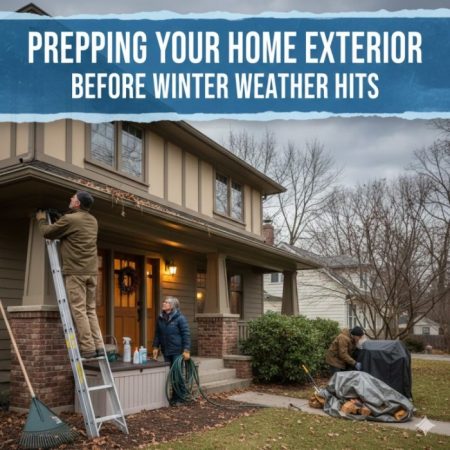Did you know that around 25% of people around the globe are at risk for floods?
Droughts and extreme weather are damaging people’s homes and leaving them stuck cleaning up the mess.
If you want to be prepared for flooding and have wood floors, you must know what steps to take.
Keep reading to discover how you can save a water-damaged wood floor and preserve the beauty of your home!
Get Things Dry
The first thing you must do to protect a water-damaged wood floor is to get everything dry.
Immediately following the flood, you should try to soak up the water with towels and a vacuum. It also helps to open the windows and run a dehumidifier to prevent moisture from going between the wooden panels. If you had a burst pipe, make sure you check other areas in the house for water as well.
Drying is the most critical step in saving wood flooring. If the wood panels absorb too much moisture, they can ruin the shape of the wood or lead to mold growth. Mold and mildew can quickly form on wet floors, especially when they’re made of such a porous material.
A great tool is a shop vacuum since it can pick up water and other liquids quickly. You can also use a squeegee while vacuuming to absorb the water getting trapped in the cracks.
Remove Furniture & Belongings
As you’re drying up the floor, you should remove all the furniture and debris.
You may need to work in phases to remove items from the room if the water damage is bad. Be careful when you lift the furniture, try not to drag it across the floor since it can cause more damage. It helps to put all the wet items in a dry space, preferably in the sun.
With too many items in the room, it can prevent the wood from fully drying and you may get pockets that hold onto moisture.
Scrub the Floors
The combination of water and dirt can lead to mold and mildew if bacteria grow.
After the floors are mostly dry, you must scrub the floors with a soft-bristled brush and warm water. You should add a gentle cleaning solution to kill the bacteria. Avoid strong chemicals that could eat away at the surface of the wood.
Aside from scrubbing the floors, you should also get the baseboards and stairs.
Don’t pour water directly on the floor, you want to use as little as necessary to get the job done. Scrub in circles and make sure you remove all of the dirt. You can wipe the floors with a towel as you finish each section.
Contact Restoration Companies
If you’re still having difficulty removing the water, a water restoration company can help.
Water restoration service teams have all the tools needed to dry your home and preserve its structure. Although you can dry floors with a regular dehumidifier, Professional services like Protegrity Restoration will have stronger methods to assist you in such damages, including using specialised equipment that is designed for the job at hand.
The longer the water sits on the wood floors, the more that will soak into the pores. You can learn here about the best solutions to this problem.
Check for Mold
Once the floors are clean and dry, your job isn’t complete.
Each day, you should check on the areas that got exposed to water damage. Since water can get trapped and be difficult to identify, mold can grow in hard-to-reach spaces. Look for discoloration, spongey wood, and moisture to find growth.
White and green mold are the most common, however, you should always check for black mold. Trisodium phosphate is a powerful solution that can be diluted with water to treat moldy spots. Rinse the wood with water and ensure it fully dries after treating the mold.
Keep fans running and windows open for about a week after the flooding occurs, just to be safe.
Repair Damaged Floorboards
No matter how many fans you have running or how quickly you got to the mess, sometimes, cupping is inevitable.
Cupping occurs when the floorboards start to concave and change shape. The water changes the structure of the wood and can cause a bumpy or rough surface. The best way to fix this problem is by sanding the wood down to create a smooth surface.
Most people notice cupping on the ends of the wood panels since there are more access points for moisture. If you notice cupping, you may have to go back a few steps and focus on drying the floors again. The opposite side might be saturated in water, causing more damage to the wood.
The wood must be as dry as possible when you sand it. Depending on the damage, you may also need to reseal the top layer.
What If You Have Wooden Laminate Floors?
Laminate floors that look like wood are becoming more common in homes.
Although you may not have real hardwood floors in your home, you are in luck when it comes to water damage. Flooding can ruin your panels, but fortunately, they are cheap and easy to replace. The planks are typically made up of wood pulp, which can swell when it gets wet.
Try not to get discouraged about the panels if they get ruined. Remove them all and make sure the bottom layer is fully dry before laying down a new set of flooring.
Do You Have a Water-Damaged Wood Floor?
Treating a water-damaged wood floor can seem like an impossible task, especially if the water is a foot deep.
People are beginning to experience more flooding as weather patterns change and houses age. If you want to preserve your beautiful wood floors after water enters your home, you need to move quickly. Getting the water off the floor will prevent it from absorbing into the fibers and warping their shape.
Don’t forget to use a cleaning solution to remove the dirt and stop mold from growing in the corners. A water restoration team can help during the entire process and reduce long-term damage.
If you want to learn more about flood damage and taking care of your home, read our blog for the latest info!






